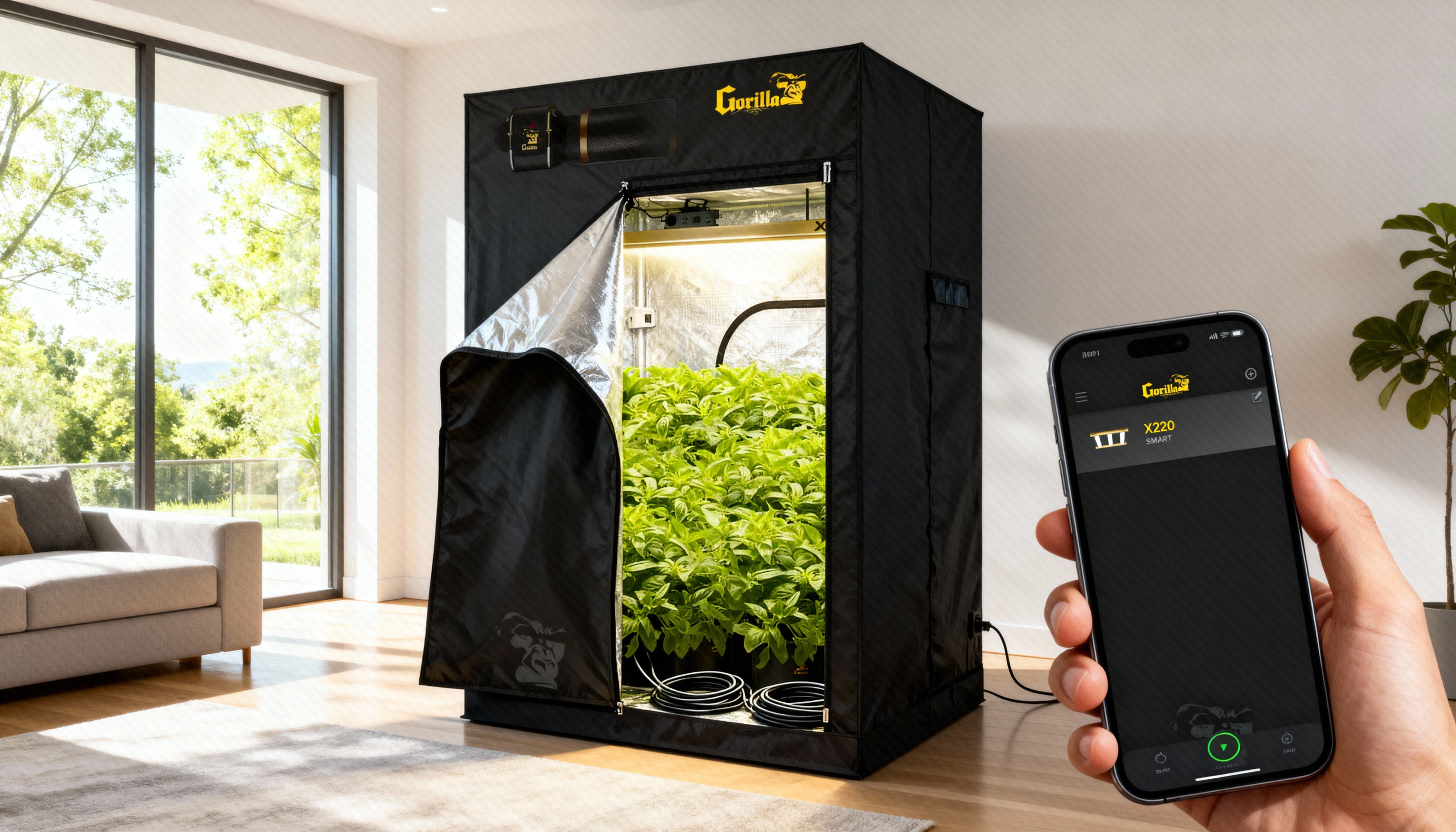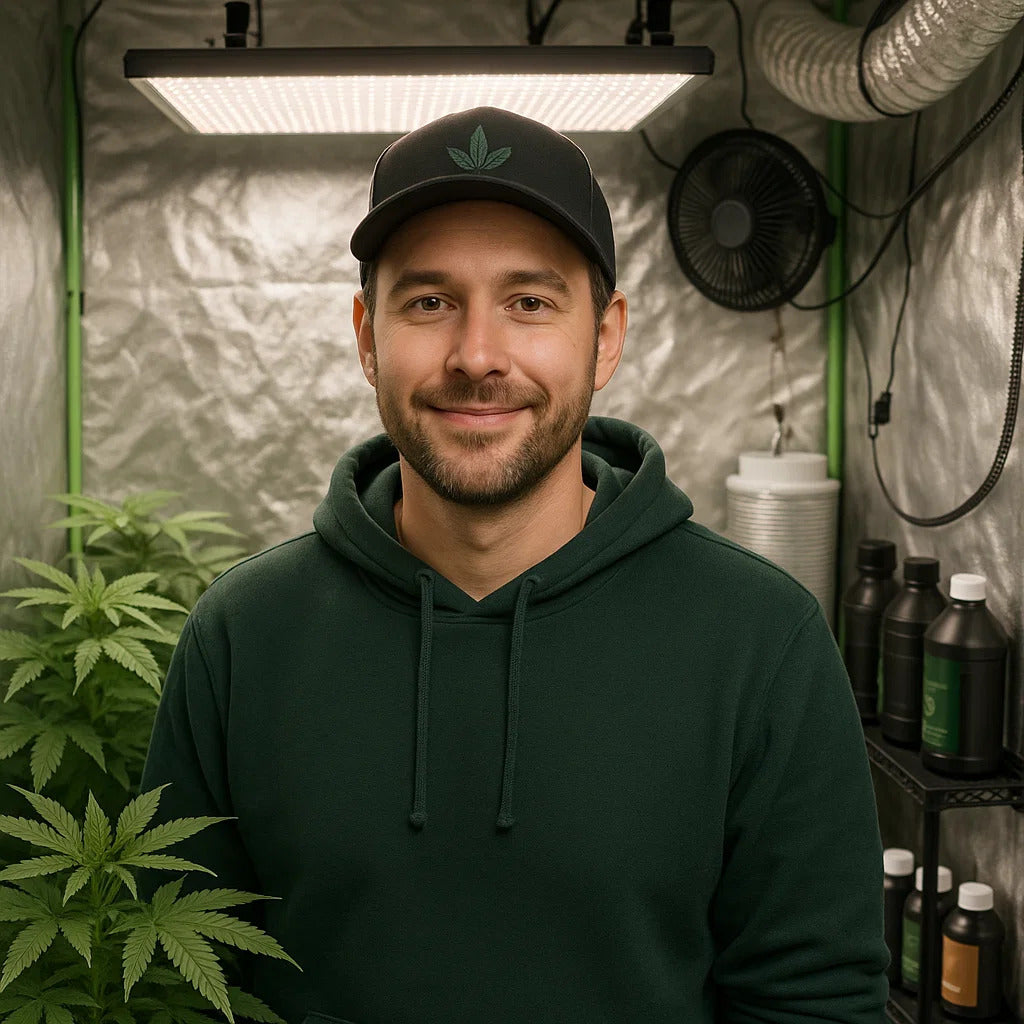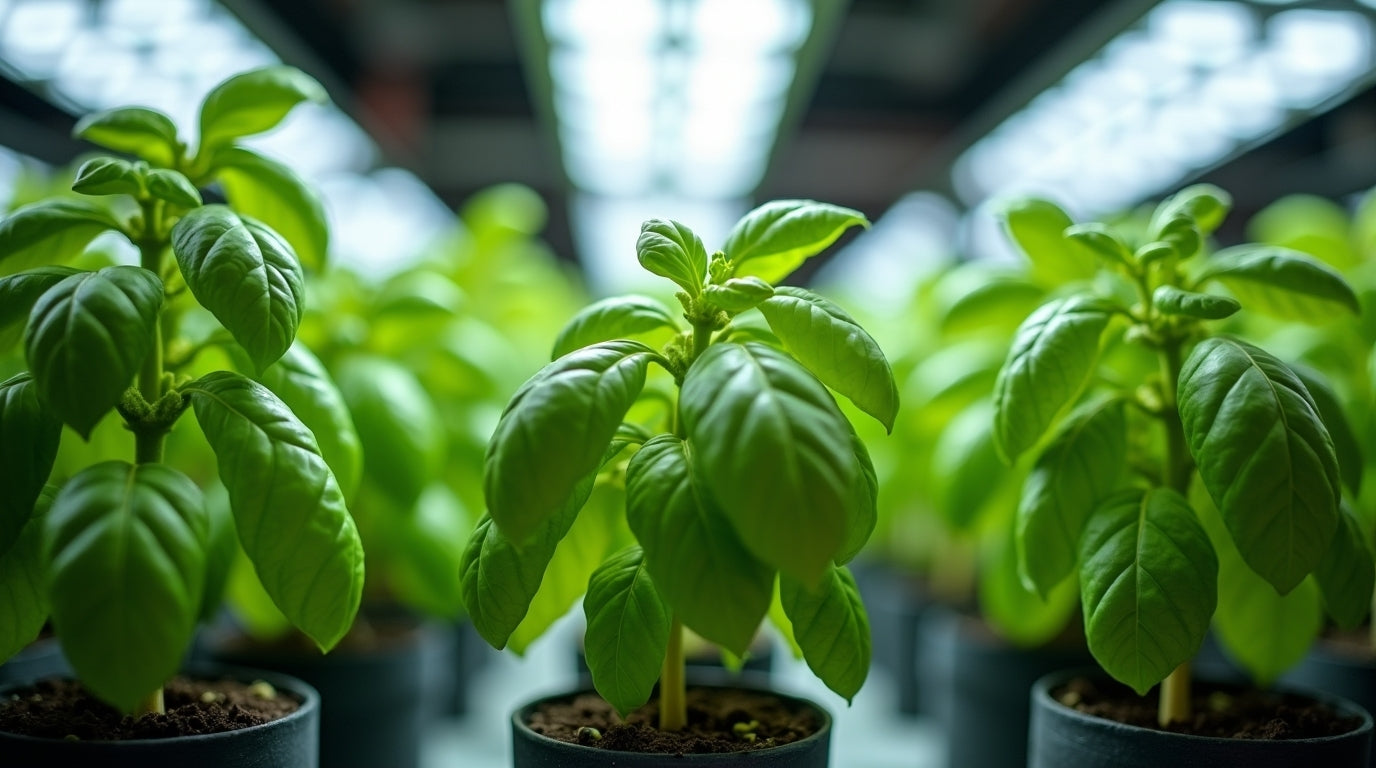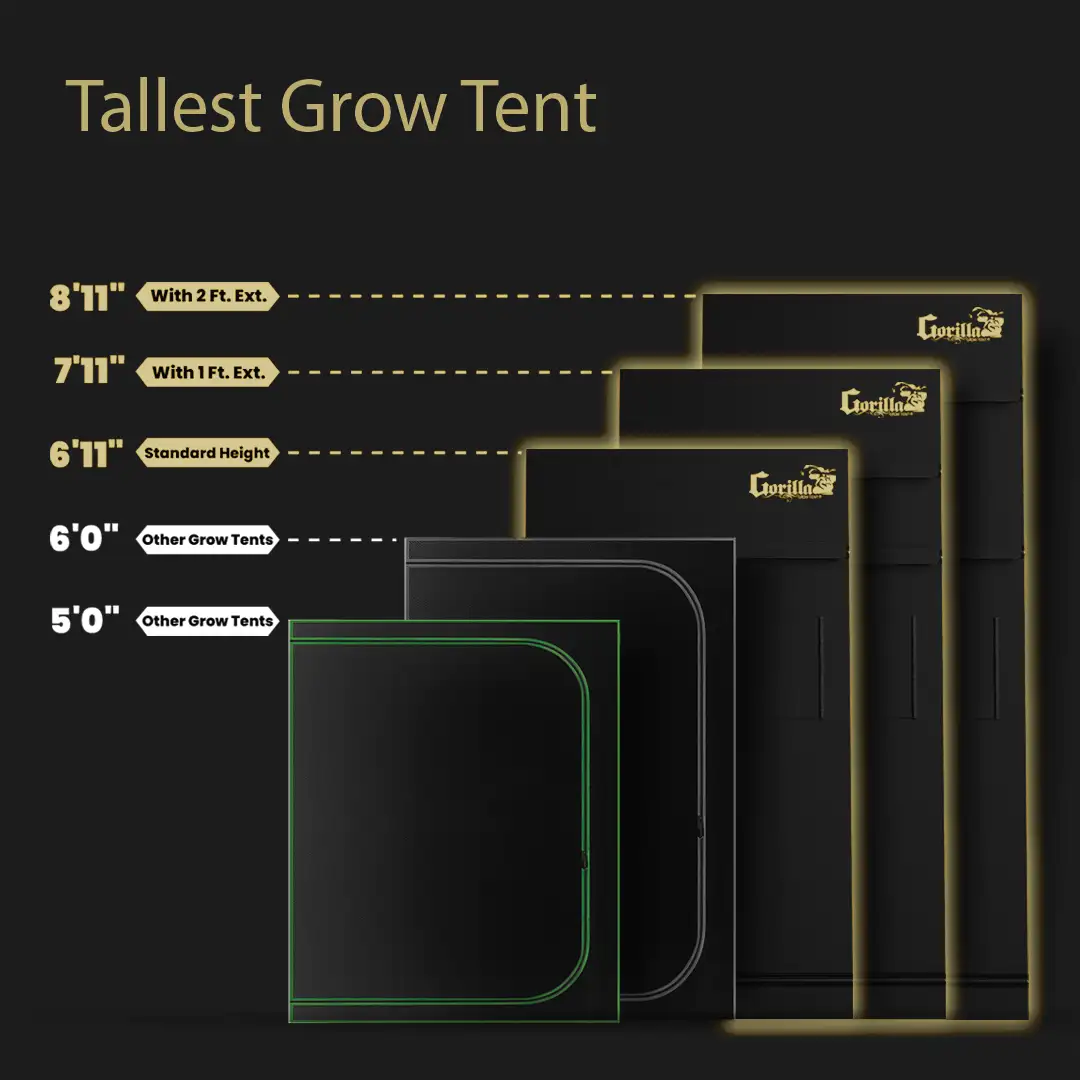
Maintaining Optimal Conditions in Growing Tents: Your Complete Environmental Control Guide
Want to know the secret to consistently big harvests from your indoor garden? It's not just about choosing the right plants or expensive equipment—it's about maintaining optimal conditions in your growing tent day after day, week after week. Think of your grow tent as a miniature ecosystem where you're in complete control of every environmental variable.
Most plant problems—from stunted growth to pest infestations to disappointing yields—trace back to environmental issues. When temperature, humidity, airflow, and light work together harmoniously, your plants thrive naturally with minimal intervention. But when these conditions drift out of range, even the healthiest genetics struggle to reach their potential.
This comprehensive guide walks you through every aspect of environmental control for grow tents. Whether you're setting up your first 2x2 grow tent or optimizing a professional 5x5 setup, you'll learn exactly how to create and maintain the perfect growing environment.
Understanding the Four Pillars of Environmental Control
Successfully maintaining optimal conditions means mastering four interconnected elements: temperature, humidity, air circulation, and light. Each affects the others, creating a dynamic system that requires attention and adjustment.
Temperature: The Foundation of Plant Health
Temperature drives virtually every metabolic process in your plants. Too hot, and plants close their stomata to conserve water, halting growth. Too cold, and nutrient uptake slows dramatically. The sweet spot for most indoor plants falls between 70-80°F during lights-on periods and 60-70°F during lights-off.
Different growth stages prefer slightly different temperatures. Seedlings and clones appreciate warmer conditions around 75-80°F with minimal day/night variation. Vegetative plants thrive in the 70-85°F range, while flowering plants often prefer slightly cooler temperatures between 65-75°F to preserve terpenes and prevent heat stress.
Monitor temperature at canopy level—not at the top or bottom of your tent—since that's where your plants actually live. Digital thermometers work, but modern smart sensors like the Gorilla GXi WiFi Temperature and Humidity Sensor provide real-time monitoring and automatic alerts when conditions drift out of range.

Humidity: The Often-Overlooked Critical Factor
Relative humidity affects transpiration rates, nutrient uptake, and disease susceptibility. Like temperature, optimal humidity levels vary by growth stage. Seedlings and clones need high humidity (65-70%) because their root systems aren't fully developed. Vegetative plants do best at 50-70%, while flowering plants prefer progressively lower humidity—50% in early flower, dropping to 40% or even 30-35% in late flower.
Low humidity causes excessive transpiration, leading to nutrient burn and crispy leaf edges. High humidity invites mold, mildew, and fungal diseases that can destroy your entire crop overnight. The challenge is maintaining consistent humidity levels as temperatures fluctuate throughout the day.
This is where understanding VPD (Vapor Pressure Deficit) becomes game-changing. VPD represents the relationship between temperature and humidity, telling you precisely how much moisture plants can transpire. Professional growers target specific VPD ranges for each growth stage rather than just monitoring humidity alone. For more on this crucial concept, check out our guide on lowering VPD in grow tents.
Air Circulation: The Life Blood of Your Growing Environment
Stagnant air kills more plants than most growers realize. Without proper air movement, hot spots develop near lights, cold zones form near vents, and humidity pockets create perfect conditions for mold and pests. Air circulation strengthens plant stems, distributes CO2 evenly, and prevents the boundary layer of depleted air that forms around leaves.
Your ventilation system needs three components working together: exhaust fans to remove hot, humid air; intake fans (passive or active) to bring in fresh air; and oscillating fans to keep air moving within the tent. The Gorilla GXi 6 Inch Inline Fan represents the gold standard for exhaust ventilation, offering whisper-quiet operation and automated climate control.

Most tents operate best with slight negative pressure—meaning exhaust removes more air than intake brings in. You'll see the tent walls pull in slightly, which helps contain odors and indicates proper air exchange. Learn more about setting up proper airflow in our grow tent ventilation tips article.
Essential Equipment for Environmental Control
Quality equipment makes maintaining optimal conditions exponentially easier. While you can cobble together basic systems from discount parts, investing in professional-grade gear pays dividends through reliability, precision, and automation.
Smart Monitoring Systems
Gone are the days of checking gauges every few hours. Modern WiFi-enabled sensors provide 24/7 monitoring with smartphone alerts when conditions drift out of range. The Gorilla GXi WiFi Temperature and Humidity Sensor offers laboratory-grade accuracy (±0.3°C temperature, ±2% humidity) and calculates VPD automatically.
These smart sensors don't just monitor—they integrate with your ventilation system to maintain conditions automatically. Set your target temperature, humidity, or VPD, and the system adjusts fan speeds in real-time to hold those parameters steady.
Ventilation: Your Most Important Investment
A quality inline fan is non-negotiable for successful growing. Calculate your tent's cubic footage and aim to exchange all air every 1-3 minutes. For a standard 4x4 grow tent (112 cubic feet), you need a fan rated for at least 200-250 CFM to account for carbon filter resistance and ducting friction.
The GXi inline fan series offers sizes from 4-inch for small tents to 8-inch for large operations. All feature advanced EC motors that use 30% less power than traditional fans while running whisper-quiet—critical for home growing.
Supplementary Climate Control Equipment
Depending on your space and climate, you may need additional tools:
- Dehumidifiers: Essential for flowering stages and humid climates
- Humidifiers: Necessary for dry environments or early growth stages
- Air conditioning units: For hot summer growing or high-wattage lighting
- Heaters: For cold basements or winter growing
- Carbon filters: For odor control (pairs with inline fans)
The key is right-sizing equipment to your space. Oversized dehumidifiers cause wild humidity swings, while undersized units run constantly without achieving target levels.
Daily, Weekly, and Monthly Maintenance Tasks
Maintaining optimal conditions isn't set-and-forget—it requires consistent attention and proactive maintenance. Developing routines prevents small issues from becoming crop-destroying disasters.
Daily Checks (5-10 minutes)
Every day, take a quick walk-through of your growing space:
- Verify temperature and humidity readings are within target ranges
- Check for water accumulation or condensation on tent walls
- Inspect plant leaves for signs of stress (cupping, discoloration, wilting)
- Ensure fans are operating correctly without unusual noises
- Look for pests or disease symptoms on leaves and stems
Modern systems like the GXi ecosystem make daily monitoring effortless through smartphone apps that track conditions continuously and alert you to problems immediately.
Weekly Maintenance (30-60 minutes)
Weekly tasks maintain system performance and catch developing issues:
- Clean dust from fan blades and vents to maintain airflow
- Test backup equipment to ensure it's ready if primary systems fail
- Calibrate sensors if readings seem inconsistent
- Inspect ducting for tears, disconnections, or kinks restricting airflow
- Document environmental data to identify patterns or trends
- Adjust settings as plants grow and their needs change
Monthly Deep Maintenance
Once monthly, perform thorough system checks:
- Deep clean all fans, filters, and ducting
- Replace or clean carbon filters (typically every 6-12 months)
- Inspect tent seams, zippers, and ports for light leaks or air leaks
- Verify all equipment is functioning at peak efficiency
- Update firmware on smart devices to access new features
- Review growing data to optimize future cycles
Consistent maintenance prevents equipment failures during critical growing periods. A $50 replacement fan bearing costs far less than losing a mature crop to overheating.
Troubleshooting Common Environmental Issues
Even with careful attention, environmental challenges arise. Recognizing problems early and responding appropriately separates successful growers from frustrated hobbyists.
Temperature Problems
Too Hot: Increase exhaust fan speed, add air conditioning, reduce lighting intensity, or switch to LED lights that generate less heat. Ensure lights are positioned at proper distances from canopy. The adjustable height of Gorilla Grow Tents makes light positioning effortless.
Too Cold: Add a space heater with thermostat control, insulate tent if in cold locations, reduce exhaust fan speed during lights-off periods, or schedule lights-on during coldest parts of the day.
Humidity Challenges
Too High: Increase air exchange rates, add dehumidifier, reduce watering frequency, ensure proper drainage, and increase air circulation. Our guide on reducing humidity in grow tents provides detailed strategies.
Too Low: Add humidifier, reduce exhaust fan speed, place water trays near intake vents, mist plants during vegetative growth, or switch to hydroponic systems that naturally increase humidity.
Air Circulation Issues
Stagnant Air Pockets: Add oscillating fans positioned to disrupt dead zones, adjust fan angles to create circular airflow patterns, or increase overall air exchange rates.
Excessive Negative Pressure: Install High CFM accessories to support tent walls, reduce exhaust fan speed, increase passive intake size, or add active intake fan.
For comprehensive troubleshooting guidance, our complete grow tent setup guide walks through solutions to virtually any environmental challenge.
Advanced Techniques: VPD and Precision Control
Once you've mastered basic environmental control, VPD management elevates your growing to professional levels. VPD optimizes the relationship between temperature and humidity for maximum transpiration and nutrient uptake.
Target VPD ranges vary by growth stage:
- Seedlings/Clones: 0.4-0.8 kPa
- Vegetative Growth: 0.8-1.2 kPa
- Early Flowering: 1.0-1.4 kPa
- Late Flowering: 1.2-1.6 kPa
The Gorilla GXi system calculates VPD automatically and adjusts environmental conditions to maintain optimal ranges. This level of precision control was previously available only to commercial operations but is now accessible to home growers.
Seasonal Adjustments for Year-Round Growing
Environmental control challenges shift with seasons. Summer heat requires aggressive cooling strategies, while winter cold demands heating and humidity maintenance. Smart growers adjust their systems proactively rather than reactively.
Summer Growing: Increase exhaust capacity, run lights during cooler nighttime hours, add air conditioning if necessary, and maintain aggressive dehumidification during flowering.
Winter Growing: Add supplemental heating, increase humidity through humidifiers or water trays, insulate tent if in unheated spaces, and reduce ventilation to retain warmth.
The thermal mass and superior insulation of Gorilla Grow Tents (1680D canvas versus standard 200-600D) significantly reduce seasonal environmental challenges through better temperature stability.
FAQ: Maintaining Optimal Grow Tent Conditions
Q: What's the ideal temperature and humidity for grow tents?
A: It depends on growth stage. Vegetative plants thrive at 70-85°F with 50-70% humidity. Flowering plants prefer 65-75°F with progressively lower humidity (50% early flower, 30-40% late flower). Seedlings need 75-80°F with 65-70% humidity. For precision control, target VPD ranges instead: 0.8-1.2 kPa for vegetative, 1.2-1.6 kPa for late flowering.
Q: How often should I exchange air in my grow tent?
A: Exchange all air every 1-3 minutes for optimal conditions. Calculate your tent's cubic footage (length × width × height), then choose an inline fan with CFM rating equal to or greater than that volume. Account for carbon filter resistance by adding 25-30% to your calculated requirement.
Q: Do I really need a WiFi temperature and humidity sensor?
A: While not absolutely required, smart sensors dramatically improve growing success and reduce workload. They provide 24/7 monitoring, instant alerts when conditions drift, automatic VPD calculations, and historical data tracking. The Gorilla GXi sensor pays for itself quickly through prevented crop losses and optimized yields.
Q: How do I prevent mold and mildew in my grow tent?
A: Control humidity below 60% (ideally 40-50% during flowering), ensure strong air circulation with multiple fans, exchange air frequently with inline fans, avoid overwatering, and maintain cleanliness. Proper ventilation is your best defense against fungal problems.
Q: Can I grow year-round with a grow tent?
A: Absolutely! That's one of the biggest advantages of controlled environment growing. You'll need to adjust your environmental controls seasonally—more cooling in summer, more heating in winter—but quality equipment like Gorilla Grow Tents and GXi climate control systems make year-round cultivation straightforward regardless of outdoor conditions.
Quick Takeaway: Featured Snippet Summary
Maintaining optimal grow tent conditions requires controlling four key factors: temperature (70-80°F vegetative, 65-75°F flowering), humidity (50-70% vegetative, 30-40% late flowering), air circulation (complete exchange every 1-3 minutes), and proper lighting. Use quality monitoring equipment, perform daily checks, and invest in automated climate control systems. Smart sensors and inline fans dramatically improve consistency while reducing workload for successful year-round indoor growing.
Create Your Perfect Growing Environment Today
Mastering environmental control transforms indoor growing from a frustrating gamble into a reliable, rewarding practice. When temperature, humidity, and airflow work in harmony, plants respond with vigorous growth, disease resistance, and impressive yields that justify your investment.
The foundation of successful environmental control starts with quality equipment. Gorilla Grow Tents provide superior insulation and structural integrity that makes maintaining conditions easier, while the GXi ecosystem delivers professional-grade automation accessible to growers at every experience level.
Whether you're setting up your first tent or optimizing an existing operation, focus on the fundamentals: accurate monitoring, proper ventilation, and consistent maintenance. Master these elements, and you'll consistently produce the healthy, productive plants every grower dreams of.
Ready to take control of your growing environment? Explore our complete collection of grow tents, climate control equipment, and essential accessories designed specifically for optimal environmental management. Your best harvest starts with the perfect conditions—and we're here to help you create them.
For more guidance on setting up and optimizing your indoor garden, check out our indoor grow room setup guide and beginner's setup tutorial. Grow strong!

Lena Myles
I'm a mushroom enthusiast and home cook based in Oregon. I'm passionate about foraging and creating fungi-focused recipes, especially delicious, plant-based dishes using gourmet mushrooms like trumpet, shiitake, and oyster. When I’m not in the kitchen, you’ll usually find me wandering the woods in search of new wild flavors.


